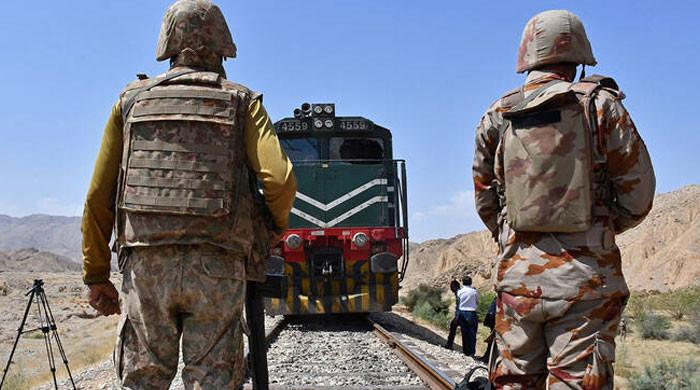Political observers believe that if the separation of a feeding unit is possible through peaceful means, then there is no damage to using the self -determination principle.
For example, people in the Canadian province of Quebec and the British region of Scotland were allowed to express their opinion through a referendum about separation. In both cases, the majority decided not to leave the mother country, expressing the desire to remain in union with an economy in general.
In these two cases, the democratic will of the people was respected, and those who had separatist tendencies did not turn to any armed struggle.
It is important to mention that Scotland fought an armed struggle in the past, but over time, the pragmatics within Scottish society realized that collaboration with London was better than antagonizing it. The Scots were rewarded for their pragmatism, and many of them secured senior positions in the British colonial administration worldwide. Some of them became an integral part of the British ruling elite, thriving with the looting and colonial loot, in addition to reaching the London power runners. This greatly benefited Scottish society, which witnessed more prosperity than Ireland, who chose the path of armed struggle.
It is believed that industrial and economic productivity in Northern Ireland began to decrease long before the riots that exploded in 1968. For example, manufacturing employment of the region was reduced by approximately 15,000 jobs between 1949 and 1966. But the armed struggle entangled investors who expressed renouncing to invest there. The economic consequences were catastrophic for the region, which incurred the losses of £ 14 billion due to personal injuries, material damage and costs of law and order.
At the end of the day, the Irish had to choose the path of peace and reconciliation, which benefited common people. For example, violence had reduced GDP of Northern Ireland by up to 10%. In 1998, the GDP per capita of Northern Ireland was 20% lower than the general level of the United Kingdom, although higher than Wales or the Northeast (the poorest English region). For 2019, before the COVID-19 pandemic, the GDP per capita of Northern Ireland had grown by 27% in real terms; The gap with the level of the United Kingdom remained relatively unchanged, in about 21 percent. Northern Ireland began to overcome Wales and Northeast.
The Basque Homeland and Freedom Movement in Spain was not terrible in terms of deaths, killing more than 800 people, but it was very durable, more than 40 years, fighting for the independence of the seven regions of the Spanish north and the southwest of France that Basque separatists claim as their own. When emerging in the 1960s, he lost his impulse in the 21st century, choosing to participate in dialogues. The separatist group was completely disarmed in 2017. Spain also faced separatist trends in Catalonia, but the people of that region remained peaceful, freeing a political struggle for their rights.
Unlike Spain, Canada and the United Kingdom, nationalist insurgences or separatist movements proved to be very brutal and bloody in non -western countries. For example, the fighting of the Kurdistan Workers Party in Türkiye led to the murder of more than 40,000 people. The Kurds in Iraq, Syria and Iran also housed separatist aspirations, and some of them also fought against the states in question. All Kurds groups had to make commitments in one way or another.
The tamil insurgency in Sri Lanka claimed from 20,000 to 75,000 lives. The Sri Lanka government states that the toll was 9000. The fierce militants had to surrender after paying a high price for their separatist movements. Assam, Nagaland, Tripura, Meghalaya, Manipur, Mizoram and Arunachal Pradesh, in the northeast region of India, also faced insurgences and separatist movements that claim tens of thousands of lives.
The separatist struggle of South South proved to be one of the bloodiest incidents of modern times, which killed almost 400,000 people, displacing four million internally. The acrimony caused by the brutal separation has left deep grades in the psyche of the Sundays, who are still dealing with the effects of this conflict, in addition to dealing with more disturbances and civil struggles.
The majority of the countries that secured independence after 1917 and more specifically after World War II had the blessing of the Soviet Union and the socialist camp that supported the separatist and nationalist movements financial, morally and diplomatically. The majority of the separatists who fought for independence were fighting such struggles against the colonial countries that were deeply despised throughout the global south. By 1945, 85% of the world was in the claws of colonialism. It was Moscow’s support that helped liberation movements to break the cracks of colonial subjugation.
After 1992, only separatist groups that enjoy the support of the West managed to gain freedom. Muslims of East Timor, South Sudan and Bosnia had this support in one way or another. The West did not throw their blessing behind each group, without fulfilling their promises in all cases.
Nationalists want to use their natural resources for their own people. The question is: if a nationalist group obtains freedom with the help of imperialist or global powers, could you use these resources for its people, or would it be at stake for transnational corporations? These corporations demolished nationalist governments in Iran, Guatemala, Chile and other parts of the world because the leaders of those unfortunate countries wanted to use their resources for their people, enraging the West.
Given all this, it can be advisable, critics argue, which groups such as Baloch separatists follow the path of reconciliation, learning from separatist movements in various parts of the world that surrendered at the end.
A few years ago, when emotions ran in parts of Sindh, Dr. Qadir Magsi and other nationalists of Sindhi warned young people against the catastrophic impacts of said militancy. They mobilized the entire civil society of Sindhi against the spectrum of militancy.
Today, the young people of Sindhi are reaping the dividends of the peaceful struggle. His representation in the bureaucracies of provincial, federal and local organizations has witnessed a tremendous increase. Baloch could also follow the same path, but both the political leadership of the State and Baloch will have to carry initiatives for that purpose.
Discharge of responsibility: The views expressed in this piece are that of writer and do not necessarily reflect the editorial policy of PakGazette.TV.
The writer is an independent journalist who can be contacted in: [email protected]
Originally published in the news




